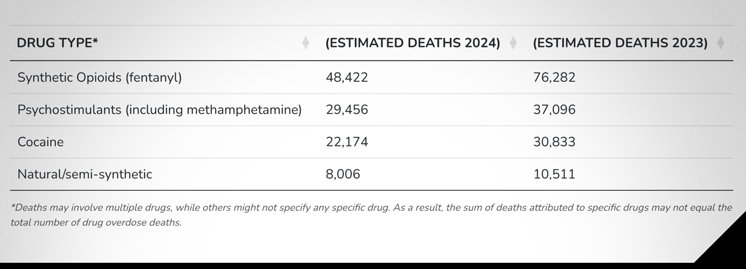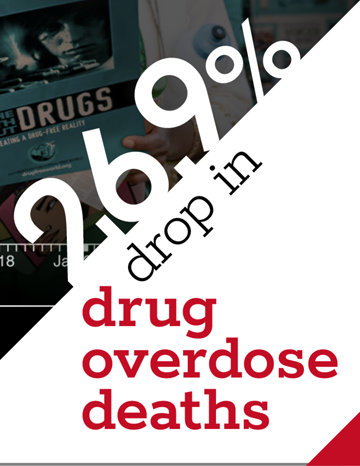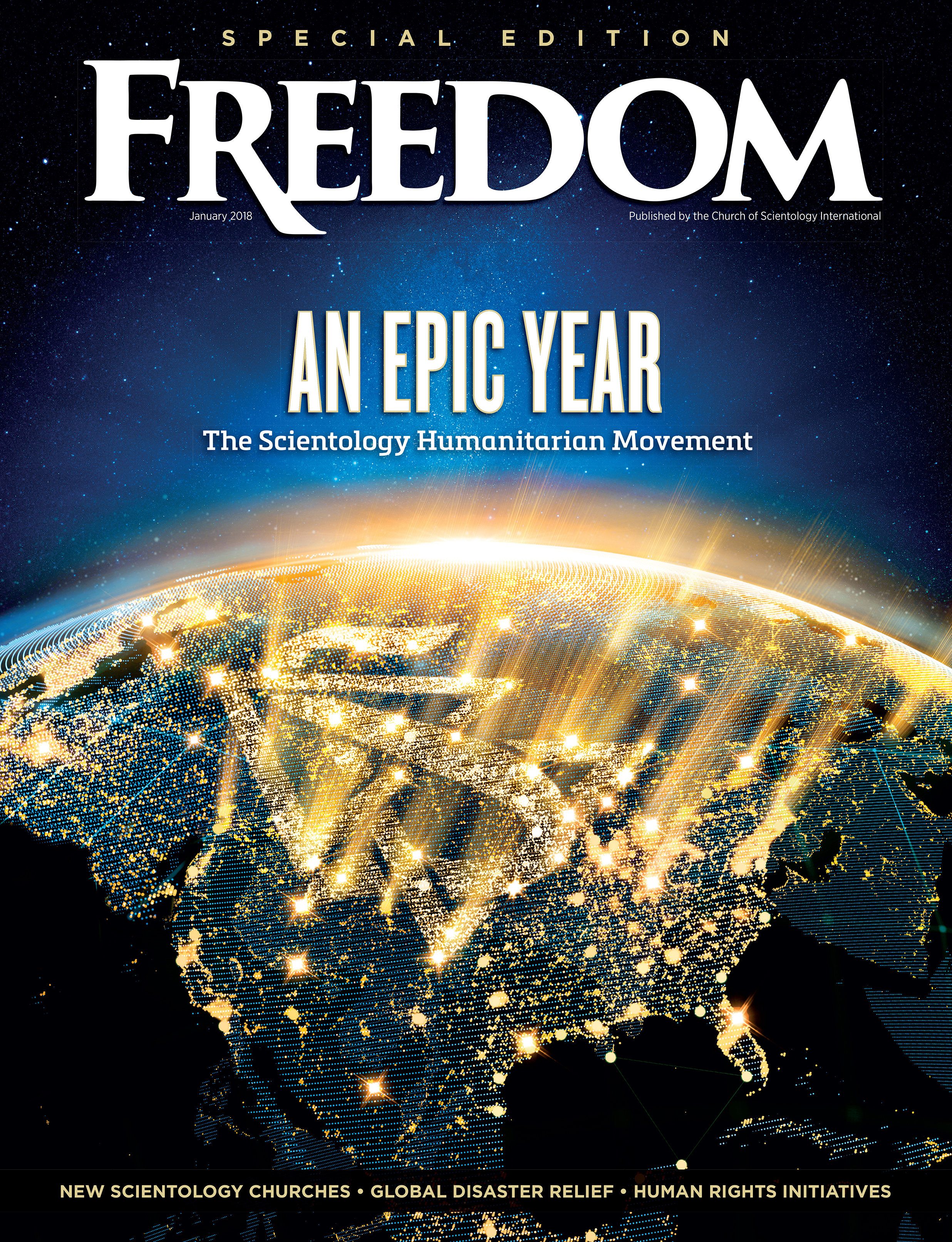US drug overdose deaths fell to an estimated 80,391 in 2024, a 26.9 percent decline from the year prior and the lowest annual total since 2019. This marks the steepest one-year decline in 45 years of CDC tracking—far surpassing the previous record of four percent in 2018. Deaths from psychostimulants fell from 37,096 to 29,456 and cocaine-related deaths from 30,833 to 22,174. Meanwhile, opioid-related deaths dropped from 83,140 to 54,743—including a nearly 37 percent decline in deaths from synthetics, primarily fentanyl.
“Now is not the time to take the foot off the gas pedal.”
That last figure is especially significant, as fentanyl is the single largest contributor to overdose deaths in America. Nearly all states reported decreases, with at least seven—Louisiana; Michigan; New Hampshire; Ohio; Virginia; Washington, DC; West Virginia; and Wisconsin—seeing declines of 35 percent or more. Only South Dakota and Nevada showed increases.

In spite of these massive drops, annual overdose deaths remain higher than they were prior to the COVID-19 pandemic, a testament to the magnitude of the spike over the last several years. Overdoses also remain the leading cause of death among Americans aged 18 to 44.
The figures, however, show a definite and undeniable downtrend, signifying a light at the end of a tunnel fraught with broken families and heartbreak. “This is a decline that we’ve been waiting more than a decade for,” said Dr. Matthew Christiansen, a physician and the former director of West Virginia’s drug control policy.

Dr. Tamara Olt, whose teenage son died of a heroin overdose, says one key factor in the decline in drug deaths is greater public awareness.
A major driver of that increased awareness is the Foundation for a Drug-Free World’s Truth About Drugs campaign, sponsored by the Church of Scientology. The global initiative educates millions through free online courses, school curricula, PSAs, pamphlets and its award-winning documentary, featuring former addicts sharing their personal stories of how substance abuse impacted their lives. To date, the program has reached hundreds of millions and is used by over 1,000 law enforcement agencies across the globe.
With momentum shifting toward effective drug prevention through awareness, the drive to overcome the substance abuse epidemic must accelerate. Just because one’s knife is approaching the dragon’s neck doesn’t make the beast any less dangerous.
As Dr. Daniel Ciccarone, a drug policy expert at the University of California, San Francisco, said, “Now is not the time to take the foot off the gas pedal.”






















